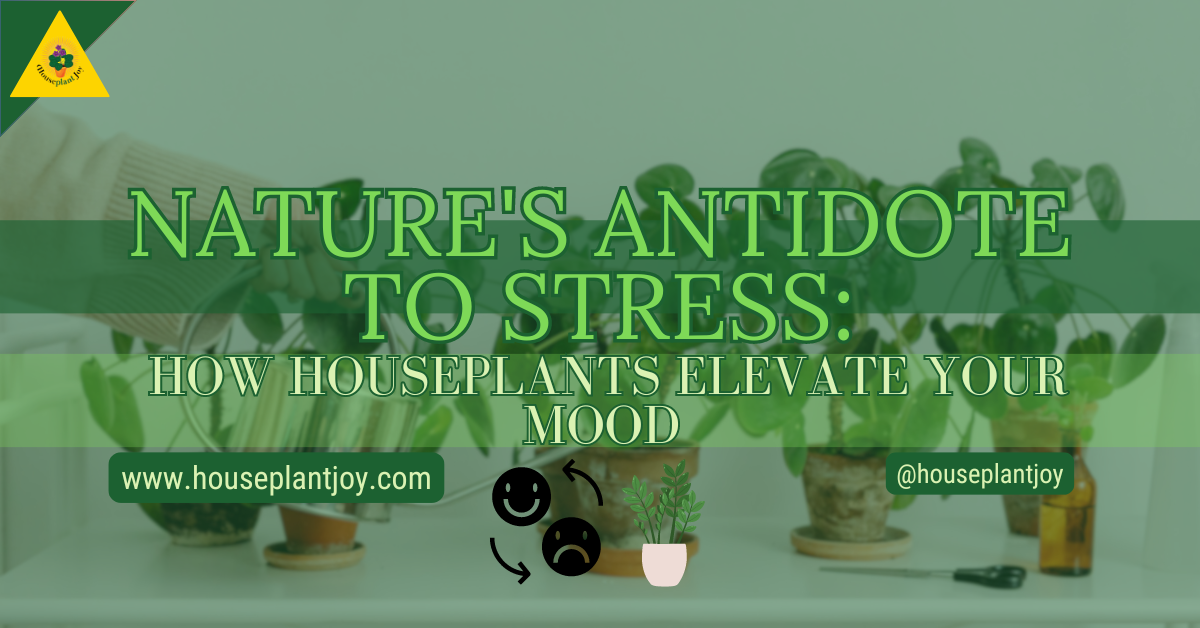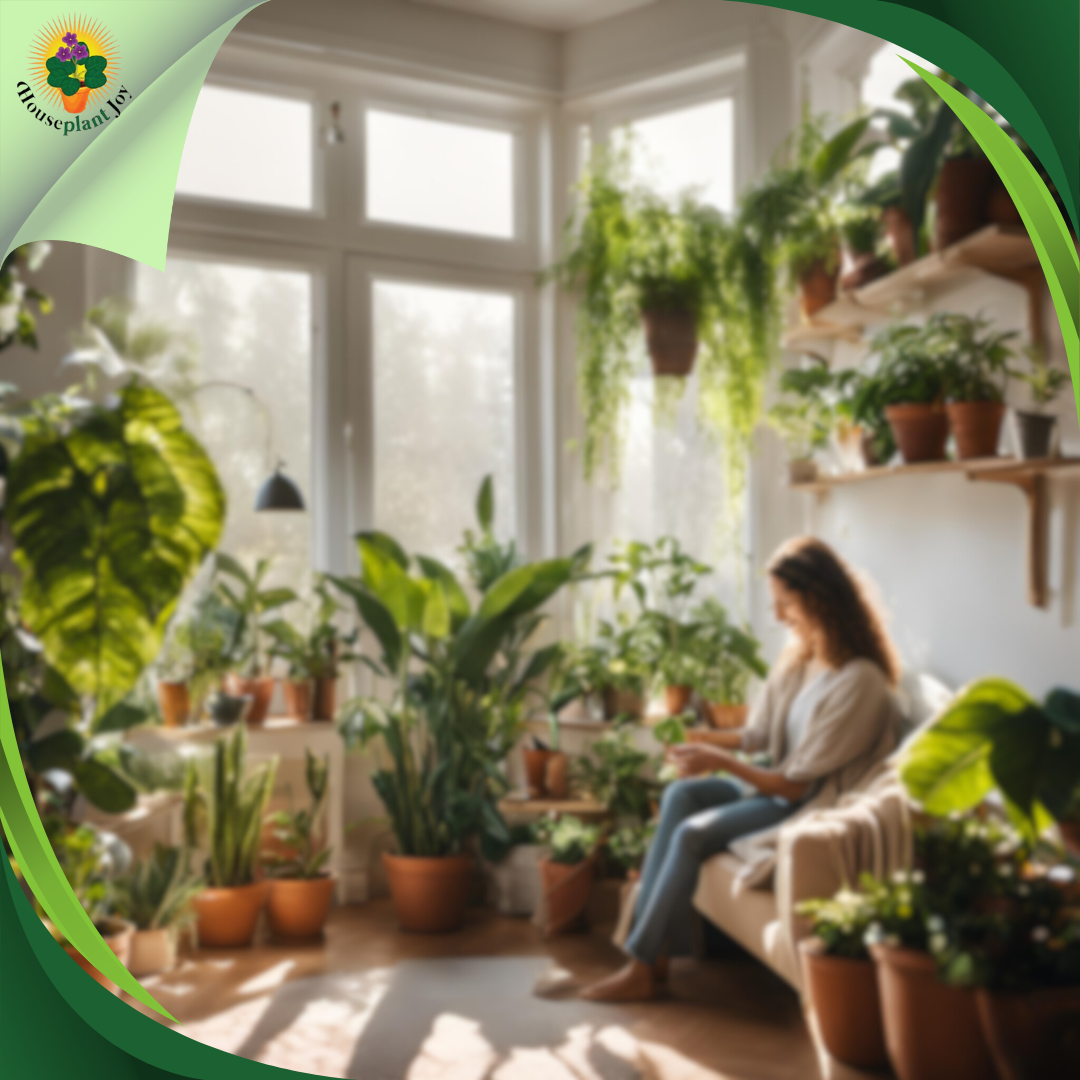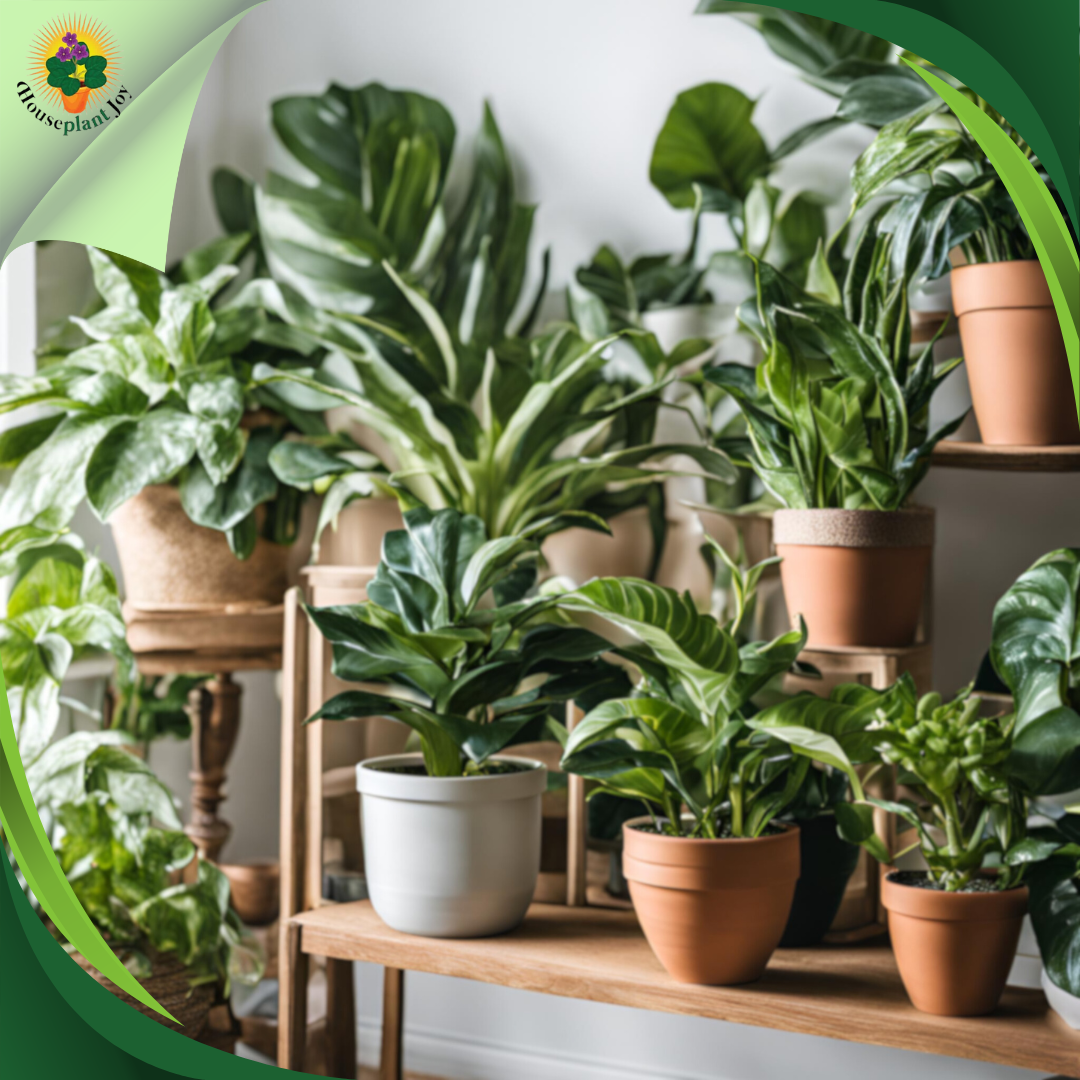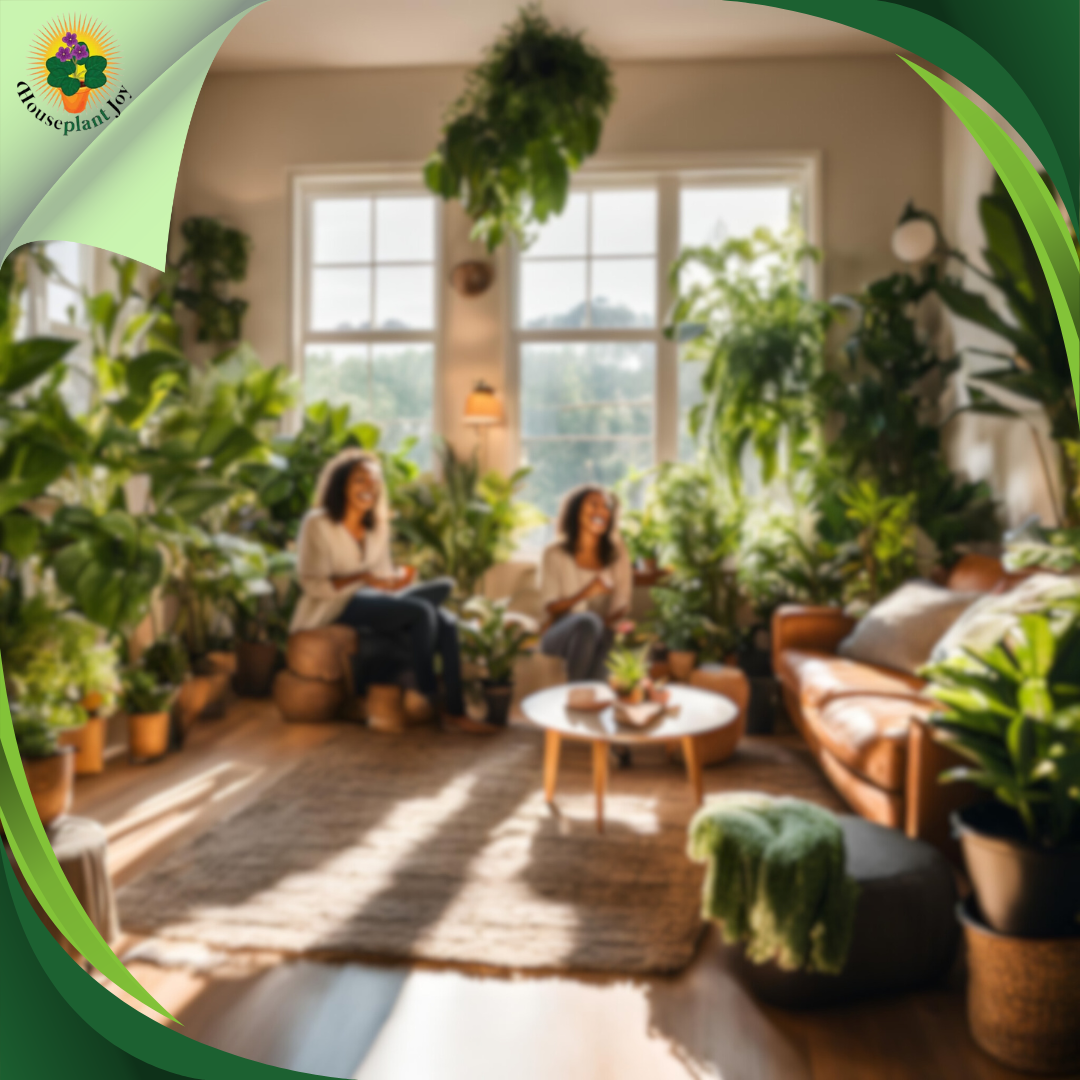HousePlantJoy is supported by our audience. When you purchase through one of our links, we may earn a small affiliate commission. As an Amazon Associate I earn from qualifying purchases. Your cost is not affected.
==================
How houseplants elevate your mood is a fascinating topic that has gained significant attention in recent years. Beyond their aesthetic appeal, these green companions offer a myriad of benefits for our mental and emotional well-being. Studies have shown that interacting with plants can reduce stress, improve mood, and even enhance cognitive function.
Here, we will delve into the science behind these positive effects and explore practical tips for incorporating houseplants into your daily life.
Nature’s Antidote to Stress: How Houseplants Elevate Your Mood
Feeling stressed? I’ve got a green solution for you.
Houseplants aren’t just pretty decorations – they’re nature’s little mood boosters. Adding some leafy friends to your home can help lower stress and make you feel happier.
It’s like bringing a bit of the peaceful outdoors inside.
I used to think plants were just for looks. But after getting a few for my apartment, I noticed I felt calmer. Turns out, there’s science behind it.
Plants can quickly improve mood. Even a few minutes around them can help you feel better.
Ready to green up your space? Let’s explore how houseplants can be your secret weapon against stress. I’ll share some easy tips to get started, even if you don’t have a green thumb.
Key Takeaways
- Houseplants can reduce stress and boost mood in just minutes
- Adding plants to your home brings nature’s calming effects indoors
- Caring for plants can be easy and rewarding, even for beginners
Biophilia: Humans’ Innate Love for Nature
I believe we have a natural draw to plants and nature. This idea is called biophilia. It means we feel good around living things.
Studies show that seeing plants can lower our heart rate and blood pressure. Even pictures of nature scenes can help us relax. I’ve noticed this myself when I look at a forest photo.
Our ancestors lived in nature for most of human history. Being in green spaces helped them stay safe and find food. Today, we still have that deep connection to plants. It’s in our genes.
Green spaces in cities are linked to less stress and better mental health. I always feel refreshed after a walk in the park. Plants remind us of our roots in nature.
How Houseplants Affect the Brain
Having plants at home or work can change how our brains work. I’ve seen this in my own life with my houseplants.
Plants can:
- Lower cortisol, a stress hormone
- Boost mood and energy
- Improve focus and memory
The color green is linked to creativity. Looking at plants may help us think of new ideas. I often sit near my plants when I need to brainstorm.
Caring for plants can also be good for us. It gives a sense of purpose and accomplishment. I feel proud when I see my plants grow.
Some plants clean the air of toxins. This can lead to better sleep and fewer headaches. I breathe easier in rooms with lots of greenery.
Choosing the Right Houseplants
When picking plants for my home, I look for ones that are easy to care for and have air-purifying qualities.
Snake plants and pothos are great choices. They’re hardy and can thrive in different light conditions.
I also love peace lilies. Their white flowers are beautiful and they’re known to remove indoor air pollutants.
For a pop of color, I go for colorful bromeliads or flowering plants like orchids. These can brighten up any room and boost my mood instantly.
It’s important to match plants to your space. I consider light levels, humidity, and temperature when deciding where to place each plant.
The Therapeutic Practice of Gardening Indoors
Caring for my indoor plants is more than just a chore – it’s a form of therapy. I find the act of watering, pruning, and repotting to be calming and meditative.
Connecting with nature through indoor gardening helps me reduce stress and improve my mood. I love watching my plants grow and thrive under my care.
I keep a small herb garden in my kitchen. The scent of fresh basil or mint as I brush past is incredibly uplifting. Plus, I get to use them in my cooking!
Propagating plants is another fun aspect. I enjoy taking cuttings and nurturing new plants. It gives me a sense of accomplishment and connection to nature.
Design Principles for Houseplant Arrangement
When I arrange my houseplants, I like to use the rule of thirds. This means dividing the space into a 3×3 grid and placing plants at the intersections. It looks more natural this way.
I also group plants in odd numbers – 3 or 5 usually work well.
Varying plant heights adds interest. I put tall plants in the back, medium ones in the middle, and short ones in front. This creates a nice layered look.
Texture is important too. I mix plants with different leaf shapes and sizes. Some smooth, some spiky, some ruffled. This keeps things visually exciting.
Color Theory and Plant Selection
Colors can affect our mood in big ways. I use this idea when picking my plants.
Green is calming, so I make sure to have plenty of leafy plants.
For pops of color, I add flowering plants. Purple and blue flowers are known to boost mood. They remind me of nature and help me relax.
I also consider my pots. White pots make plants stand out. Terracotta gives a warm, earthy feel. I match pot colors to my room’s color scheme for a cohesive look.
Variegated plants with white or yellow patterns can brighten up dark corners. They’re like natural artwork that lifts my spirits every time I see them.
Ideal Conditions for Thriving Houseplants
I’ve found that most houseplants prefer bright, indirect light. Place them near windows, but avoid direct sun which can burn leaves.
Water when the top inch of soil feels dry. Don’t overwater – it’s a common mistake!
Humidity is important too. I like to mist my plants or use a pebble tray for extra moisture. Room temperature between 60-75°F (15-24°C) is perfect for most plants.
Low-maintenance plants like snake plants and peace lilies are great for beginners. They’re forgiving if I forget to water and help purify the air.
Troubleshooting Common Plant Issues
Yellow leaves often mean overwatering. I cut back on watering and make sure the pot has good drainage.
Brown leaf tips? That’s usually from low humidity or too much fertilizer.
If I see small bugs, I wipe leaves with soapy water. For persistent pests, neem oil works wonders.
Leggy plants need more light. I move them closer to windows or add grow lights.
Rotating plants regularly helps them grow evenly.
Remember, each plant is unique. I pay attention to how my plants respond and adjust care as needed. With a little love, my mood-boosting plants stay healthy and beautiful.
Air Purification and Humidity Control
Plants are nature’s air filters. They can remove harmful toxins from the air we breathe. Some common indoor pollutants they tackle include:
- Benzene
- Formaldehyde
- Trichloroethylene
I’ve found that plants like snake plants and peace lilies are great at this job. They work 24/7 to keep my air clean.
Plants also add moisture to the air. This can help with dry skin and respiratory issues. In winter, when heating dries out my home, I rely on my plants to boost humidity.
Cognitive Function and Productivity
Having plants around can make me think better and work smarter. Studies show that being near nature, even indoors, can improve focus and memory.
I’ve noticed I’m more creative when I work near my plants. They seem to spark fresh ideas and help me solve problems.
Plants can also reduce noise in a room. This creates a calmer space for thinking and working. Less noise means fewer distractions and better concentration for me.
Sharing the Joy: Plant Swaps and Social Groups
I love going to plant swaps in my area. It’s a great way to trade cuttings and meet other plant enthusiasts. I’ve gotten some cool new varieties this way without spending a dime.
Local gardening clubs often host these events. I’ve also seen swaps organized on social media. It’s fun to see what others bring and hear their plant care tips.
Online plant groups are another way I connect. I’ve joined Facebook groups where people share photos and advice. It’s nice to chat with others who get just as excited about new leaf growth as I do.
Learning and Growing Together
Community gardens have been an awesome way for me to learn more about plants.
I’ve met neighbors and picked up new skills by volunteering.
Many nurseries offer classes too.
I’ve taken workshops on propagation and terrarium building.
It’s fun to get hands-on and ask experts questions.
Local botanic gardens often have educational programs.
I’ve gone on guided walks to learn about native plants.
Some even have special events just for houseplant lovers.
Joining a plant club has been rewarding.
We meet monthly to discuss different topics.
Members share their experiences and sometimes bring in speakers.
It’s made me feel part of a community that shares my interests.
Incorporating Plants in Workspaces
I love seeing more offices embrace greenery.
Even small desk plants can brighten up a workspace.
Some companies are creating indoor gardens or living walls.
These look amazing and clean the air.
I’ve noticed that plants in meeting rooms help people feel calmer.
Break areas with lots of greenery give employees a place to recharge.
Some offices even let staff care for plants as a fun perk.
Plants can reduce noise and create privacy between desks.
I think this helps people focus better.
Green views from windows are linked to less stress and more job satisfaction.
Urban Gardening Initiatives
I’m excited to see cities start more community gardens.
These give people without yards a chance to grow plants.
Community gardens help neighbors meet and work together.
Rooftop gardens are popping up on buildings.
They make use of empty space and cool buildings down.
I’ve seen some cool vertical gardens on the sides of buildings too.
Some cities are planting more trees along streets.
This makes walks nicer and helps clean the air.
Parks are adding nature trails and plant displays to teach people about local plants.
School gardens teach kids about nature and healthy food.
I think these are great for helping children learn and grow.
How Houseplants Elevate Your Mood: A Final Thought
The incorporation of houseplants into our living spaces offers a multitude of benefits that extend far beyond their aesthetic appeal. As we have explored in this article, these green companions can significantly enhance our mood, reduce stress, and improve our overall well-being. From the science behind biophilia to the practical tips for plant care, it is evident that houseplants play a vital role in creating a healthier and happier environment.
Personally, I have experienced firsthand the transformative power of houseplants. Having surrounded myself with greenery, I have noticed a tangible improvement in my mental clarity, reduced anxiety, and increased sense of tranquility. It is through my own journey and the countless testimonials of others that I have been inspired to share the positive impact of houseplants with the world.
I encourage you to embark on your own plant-filled adventure. Whether you are a seasoned gardener or a complete beginner, there is a perfect plant out there waiting to enhance your life. Start small, experiment with different varieties, and discover the joy of nurturing something that grows and thrives.
Thank you for taking the time to explore the fascinating world of houseplants and their ability to elevate your mood. May your journey be filled with green abundance and lasting happiness.
What are the top indoor plants known for reducing stress and anxiety?
Snake plants, lavender, and aloe vera are my top picks.
Peace lilies and jasmine are also known to have calming effects.
These plants are easy to care for and can thrive indoors.
How do indoor plants contribute to mental well-being?
It’s a soothing activity that can take my mind off worries.
Plants also improve air quality, which can boost my mood and energy levels.
Can you list some benefits of having indoor plants for emotional health?
They reduce my stress levels and anxiety.
I’ve found they improve my focus and productivity.
Plants also boost my creativity and make me feel more connected to nature.
Are there any negative impacts to consider when keeping plants indoors?
Some plants can be toxic to pets if ingested.
Overwatering can lead to mold growth.
It’s important to research plant care and choose species that fit your lifestyle.
How does incorporating nature into your living space aid in stress reduction?
The green colors and natural textures help me feel more relaxed.
Caring for plants gives me a break from screens and technology, which reduces my stress.
What should one consider when choosing plants for anxiety and depression relief?
Scented plants like lavender can be especially soothing. Consider the light in your space and choose plants that will thrive in those conditions.










